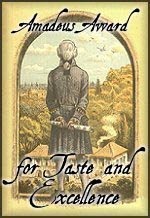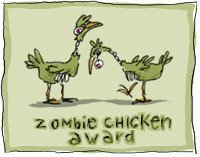Many of you are probably familiar with the fly fringe, explained by Vivien, but have you seen a whole garment made out of it? While browsing Nordiska museet’s collections I found this shawl that seems to be just that!
Posts Tagged ‘Materials’
Fly fringe shawl
April 15, 2012Finished walking stick! <3
May 25, 2011I’ve finally put together my extremely cheap walking stick!

To remind you: I got this awesome black bamboo stick for 10 SEK (about 1 EUR, 1,55 USD and not even 1 GBP)! It’s actually a garden decoration, but it’s straight, light and hard – plus it totally has that chinoise air! The knob is a curtain rod knob I got second hand for 5 SEK (about 0,50 EUR, 0,78 USD and 0,50 GBP). More about where I got the materials in this post.
So I’ve spent about 1,50 EUR, or 2,33 USD, or about 1,50 GBP on this beauty. Smiling Fox Forge’s walking stick is $50 – without the chinoise air! ;P The total length is about 147 cm.
NEW walking stick and top knob!
February 9, 2011Sorry for being away for a while, I’ve been working a lot. I know I have a few unanwsered comments, I’ll get to them. ^^;
It seems buying stuff is easier than making the pet-en-l’air, suprise suprise. ;P
Last week I bought a new walking stick! I have no pic yet – since it’s still in Robbie’s car. But it’s bamboo and it’s black and I baught it for 10 SEK – that’s about 1 EUR, 1,55 USD and not even 1 GBP! It’s actually made for garden decoration, so the quality might not be the best – but I don’t think I’m gonna go on extreme hikes with it anyway! It’ll look great in photos I should think! ;D
For Swedes I can recommend taking a look at your local Granngården store! That’s where I baught mine and they had these bamboo sticks in all sorts of colors, I was very tempted to buy a pink one! ;D Many were cracked where I bought mine though, so look at the stick before you buy it!
And just today I bought a top knob for it! My first thought was “curtain rod knob”, and my second thought was “second hand”! I went to my favorite Myrorna last week and came home empty handed – but today I went after work just because I was passing by. I found this little cute knob. And it’s not plastic (like most I found the last time) – it’s brass (I think)! <D And what did it cost me? 5 SEK! About 0,50 EUR, 0,78 USD and 0,50 GBP!

Boning in stomachers – necessary?
January 5, 2011Since I’m coming closer to making the stomacher, I’ve been looking at ways to go at it. I’ve been looking at stomachers ofc, and then I had a look at this tutorial (that I also used to make the pattern for the pet-en-l’air). They say to put boning in the stomacher – is that really necessary? I’ve been looking at so many stomachers and not very many of them seem to have boning (or am I just blind?).
How did you go at it? Experiences?
Medieval materials for the 18th century reenactor?
November 29, 2010I was just cleaning up my favourites and I found this Swedish shop selling stuff for the medieval reenactor – Medeltidsmode. I had a look through the shop to see if I should save the link. I am interested in medieval reenacting, but right not I have only the 18th century on my mind – so my radar is set on that period. When looking through the goods I found myself thinking: “Ooh, that fabric would do nicely for shifts” a.s.o.
They also have these old-fashioned pins, said to be perfect for fine fabrics:
So go have a look through the shop! Or go have a look in other medieval or maybe renaissance reenacting shops. Everything wasn’t new and novel in the 18th century – still today we use techniques and materials with roots waaaaay back in the history of fashion. ;D
Starting a new piece
July 25, 2010So, now I’ve got a serious case of pms-mood… I feel like sewing, but I’m sooo tired of pinning the trim, or emroidering buttons… Gotta start something new!
I started looking trough my stuff and said to myself – why not start with the petticoat!? I’m gonna use this method, kindy described by Katherine (Thank you!).

I’m thinking I shouldn’t start with the one I’m actually gonna use for the pet-en-l’air. So I’m starting with a fabric I’m not too careful of, but still can use as an under petticoat or simple womans petticoat – like the old light green linen sheet I used for the lining of the pet-en-l’air. There’s still enough for a petticoat see. ;D
Shouldn’t be too hard, right? ;P
Totally making this one by machine btw! It’s just a kind of toille that I might wear later anyway so… ;P
Traces of textiles in Swedish supplementary law 1644-1794
June 18, 2010A fellow larp:er and costumer, Adam Norman, has just finished a paper on textiles in Swedish supplementary law between 1644 and 1794. I am sooo excited to start reading it!
Unfortunatley it’s in Swedish, but this is the abstract:
The purpose for this paper has been to study the clothing as it appears in Swedish supplementary law between the years 1644-1794. The author have been studying the original documents and comparing laws from different years with each other. Old names of textiles have been explained, as far as have been possible. Through the study we can see how the laws first regulated the nobility, but quite quickly spread to burgess, the priesthood as well as the common people. There are some great differences in what the different classes were allowed to wear. The supplementary law both deals with the fabrics , the decorations and the cut and construction of clothing. In the laws we can see that the Swedish state introduced exact models of how the people should dress in the mid-18th century. The laws shows us what the government wished for, and not the absolute reality. In order to see how the laws were followed we must examine court orders and perhaps even art.
As soon as I’ve read it I’ll try to write a little summary, or something like it! ;D
For you Swedes, you can download the paper from Adams blog, here.

Adam in his 17th century garb
I have a STICK
May 7, 2010Dam-dam-daaam!
I always take a power walk before breakfast (no, not power nap ;P), along Svartån – the small river that runs through Örebro where I live. This morning was no different, except I saw something long and very straight washed up on the bank. It was a perfect stick for a walking stick! It’s a weee bit crooked at the bottom – but I don’t think I’ll ever be able to find something as straight for free. It’s dirty and still has it’s bark, but I think it’ll be super nice after a little care! =D
An inspirational walk
April 30, 2010 When I moved to Örebro four years ago, I had no intentions of making my own 18th century outfit – maybe having one made for me when I became a millionaire. So even if I was interested in 18th century clothing, I didn’t really pay much attention to the copies of 18th century women’s clothing at the open-air museum in Wadköping. Last summer I visited the museum again with my kid sister Jennie – I had totally forgotten about the clothes! But I was a little… horrified at what I saw. I had forgotten my camera that time though and never got to visit the museum again – until yesterday! Me and my friend Anja took a walk and ended up in Wadköping, as I had my camera with me I started snapping like crazy!
When I moved to Örebro four years ago, I had no intentions of making my own 18th century outfit – maybe having one made for me when I became a millionaire. So even if I was interested in 18th century clothing, I didn’t really pay much attention to the copies of 18th century women’s clothing at the open-air museum in Wadköping. Last summer I visited the museum again with my kid sister Jennie – I had totally forgotten about the clothes! But I was a little… horrified at what I saw. I had forgotten my camera that time though and never got to visit the museum again – until yesterday! Me and my friend Anja took a walk and ended up in Wadköping, as I had my camera with me I started snapping like crazy!
So now I want to share! The first outfit you see is actually a yellow silk pet-en-l’air with a black petticoat in tafetta. (Click the images for HUGE versions.)
But I was extremely bugged out by the synthetic decorations… ^^; Sorry! I know I’m no expert and have no right to raise my voice, but… Baaah! But hey! It’s only a copy, I understand that it’s only supposed to be a representation of what was worn during the time. ^^ Cred to the woman who made the outfit, all hand sewn, it IS very cute! I’m not sure my own pet-en-l’air will look this accurate… =S
The second outfit is more of a every day outfit. It has: a woolen jacket, a woolen petticoat, an apron and a fichu.
 It reminds me a lot of the 18th century clothes in Nordiska museet’s database, with the wool and the stripes and the colors. This outfit and the clothes in the database also reminds a lot of Swedish folk dress. Here’s a photo of me in my folk dress, as a bonus… ;P
It reminds me a lot of the 18th century clothes in Nordiska museet’s database, with the wool and the stripes and the colors. This outfit and the clothes in the database also reminds a lot of Swedish folk dress. Here’s a photo of me in my folk dress, as a bonus… ;P
The last dress is… I don’t know what it is… But it kinda looks like a fantasy larp dress inspired by 18th century clothing. Which is nice too. The museum is dedicated to Caisa Warg, a very well-known Swedish woman who wrote the most famous Swedish cook cook of all time (Hjelpreda I hushållningen för unga Fruentimber – Help/assistant in the householdning for young women). She lived between 1703 and 1769 – so I guess this dress also is supposed to represent 18th century clothing. I like the stomacher and the colors! =)
The most interesting part of the museum though, I think, is the estate inventory of Caisa after her death:
I’m gonna try to translate the clothing part, bare with me (you Swedes out there who know more of the old Swedish clothing terms, please correct/help me!):
Black tafetta petticoat with rosy knee apron
Under petticoat
Brown gloves
Horsehair hat with red tafetta lining
Blue and white tafetta… something (taftditon? anyone?) or jacket of blue damask
5 fans – ivory with black white paper
Hat with silver lace
Blue damask fur lined with greywork? (squirrel’s winter grey fur) backs
Yellow damask night/dressing robe
Scarf (maybe fichu) of fabric made from nettles or with flowers
Black velvet coat/cape
Black velvet calash(?) or long hood
Robe ronde of silk with small dots
Jacket of black lampas
Lace engagenates
2 grieving hats
Blue half silk fur with greywork? (squirrel’s winter grey fur) lining and ermine
This sure made me think of new projects! ;D
EDIT: I hope I don’t sound like a know-it-all-bitch, I’m sorry in that case! ^^;















